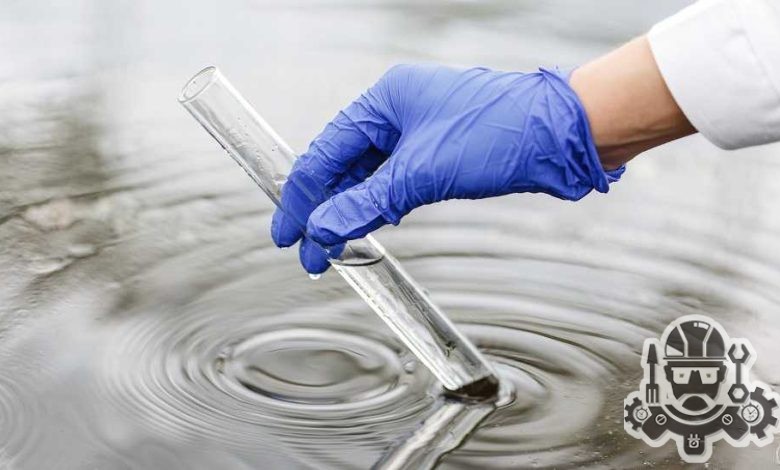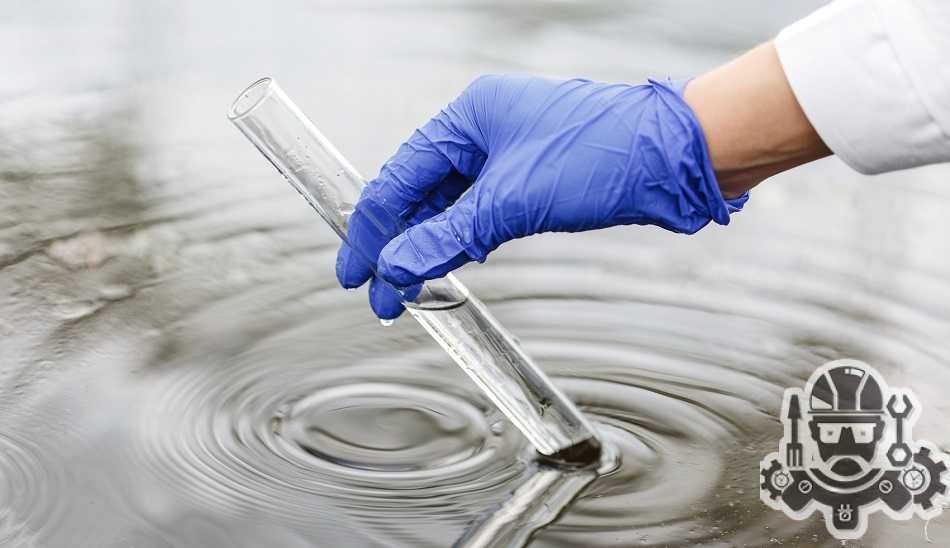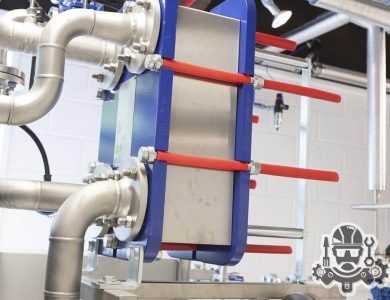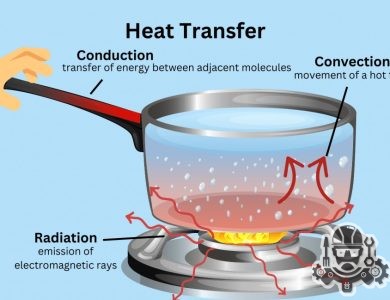Viscosity of Water

Contents
Definition Of Viscosity
Viscosity is a property of fluids that measures their resistance to flow. It is essentially a measure of a fluid’s internal friction or stickiness. In simpler terms, it refers to how easily a fluid can flow or how resistant it is to flowing. The concept of viscosity is applicable to various fluids, including gases and liquids, but in this blog post, we will focus specifically on the viscosity of water.
Water viscosity is the measure of how thick or thin water is. It determines how fast or slow it can flow. It is important to note that the viscosity of water varies with temperature—water becomes less viscous as it is heated and more viscous as it is cooled. This property plays a crucial role in numerous natural phenomena and everyday processes.
Understanding viscosity is essential in different scientific and engineering fields. It helps in analyzing fluid behavior, designing efficient industrial processes, and even in determining the performance of vehicles and sports equipment. For example, in the automotive industry, the viscosity of motor oil is carefully chosen to ensure proper lubrication and engine functionality. Likewise, in sports such as swimming, understanding water viscosity aids in improving performance and efficiency in the water.
| Factors Affecting Water Viscosity | Measuring Water Viscosity | Importance Of Understanding Water Viscosity |
|---|---|---|
|
|
|
Overall, understanding the definition of viscosity is fundamental in comprehending fluid behavior and its practical implications. The viscosity of water in particular holds immense importance in multiple fields, from scientific research to everyday applications. By grasping the concept of viscosity, we can unlock numerous possibilities and optimize various processes in our modern world.
Factors Affecting Water Viscosity
Water viscosity refers to the measure of a fluid’s resistance to flow. It plays a crucial role in various industries, including pharmaceuticals, petroleum, and food processing. Understanding the factors that affect water viscosity is essential for optimizing processes and ensuring product quality. Several factors can influence the viscosity of water, ranging from temperature and pressure to dissolved substances and impurities.
Temperature: One of the primary factors affecting the viscosity of water is temperature. As temperature increases, the viscosity of water decreases. This is because higher temperatures increase the kinetic energy of water molecules, causing them to move more freely and reducing their intermolecular forces. Consequently, at lower temperatures, water becomes more viscous, while at higher temperatures, it exhibits lower viscosity.
Pressure: Another factor that impacts water viscosity is pressure. Generally, an increase in pressure tends to decrease water viscosity. This phenomenon can be explained by the compressibility of water molecules under high-pressure conditions. As pressure increases, the distance between water molecules decreases, resulting in stronger intermolecular forces and higher viscosity.
Dissolved Substances and Impurities: The presence of dissolved substances and impurities in water can significantly affect its viscosity. Dissolved substances, such as salts or acids, can increase water viscosity by interrupting the regular arrangement of water molecules. Similarly, impurities, such as suspended solids or air bubbles, can also contribute to higher viscosity by obstructing the fluid flow. Therefore, the purity and composition of water play a vital role in determining its viscosity.
| Factor | Affected Viscosity |
|---|---|
| Temperature | Decreases with increasing temperature |
| Pressure | Usually decreases with increasing pressure |
| Dissolved Substances and Impurities | Increases with the presence of dissolved substances and impurities |
Understanding the factors that affect water viscosity is crucial for various applications. In the food industry, for example, viscosity influences the texture, consistency, and flow properties of products like sauces, soups, and desserts. Pharmaceutical formulations also rely on carefully controlling the viscosity of liquid medications to ensure accurate dosing and efficient manufacturing processes.
In conclusion, water viscosity is influenced by several factors, including temperature, pressure, dissolved substances, and impurities. By comprehending these factors, industries can optimize their processes, enhance product quality, and improve overall efficiency. Monitoring and controlling water viscosity enable precise and consistent results in countless applications.

Measuring Water Viscosity
Viscosity is an important property of fluids that affects their flow behavior. It is a measure of a fluid’s resistance to flow and is commonly referred to as “thickness.” Viscosity plays a crucial role in various industries, including chemical engineering, food processing, and oil exploration. Understanding the viscosity of water is particularly important as it is the most commonly used fluid in many industrial applications and daily activities. To measure the viscosity of water accurately, several methods and instruments are available.
One method to measure water viscosity is by using a viscometer. A viscometer is a device specifically designed to determine the viscosity of fluids. There are different types of viscometers, such as rotational, capillary, and falling ball, each suitable for specific viscosity ranges. The rotational viscometer is one of the most commonly used instruments to measure water viscosity. It consists of a spinning rotor immersed in the fluid, and the torque required to rotate the rotor is measured to determine viscosity. Capillary viscometers use the time taken for a fixed volume of fluid to flow through a capillary tube, while falling ball viscometers measure the time taken for a ball to fall through a sample of water.
Another method to measure water viscosity is by using the Ostwald viscometer. This type of viscometer relies on the principle of measuring the time taken for a specific volume of water to flow through a capillary. The Ostwald viscometer consists of a glass tube with a bulb at one end and a capillary at the other. The water sample is drawn into the bulb, and the time taken for the meniscus to pass between two marks on the capillary is measured. The viscosity of water can then be calculated using the known dimensions of the viscometer and the time taken for the flow.
Additionally, digital viscometers have become increasingly popular for measuring water viscosity. These instruments employ advanced technology, such as vibrating the sample or rotating a sensor within the fluid, and provide accurate and instantaneous viscosity measurements. Digital viscometers often come with user-friendly interfaces that allow for easy adjustment of testing parameters and provide real-time data readings, making them valuable tools for researchers, quality control laboratories, and manufacturers in various industries.
In conclusion, measuring water viscosity is crucial for understanding its flow behavior and ensuring efficient processes in numerous industries. Various methods and instruments, such as viscometers and the Ostwald viscometer, allow for accurate measurement of water viscosity. Moreover, digital viscometers offer quick and precise results, making them increasingly popular in modern-day applications. Whether it is determining the right consistency for a food product or optimizing the efficiency of chemical processes, measuring water viscosity plays a vital role in maintaining high standards of quality and performance.
Importance Of Understanding Water Viscosity
Understanding the viscosity of water is of utmost importance in various fields and industries. Viscosity refers to the internal friction or resistance to flow in a liquid. It determines how easily a liquid can flow and the rate at which it does so. In the case of water, its viscosity is influenced by several factors such as temperature, impurities, and pressure. Therefore, having a thorough understanding of water viscosity is crucial for numerous applications, ranging from cooking and food processing to industrial processes and even scientific research.
One significant aspect of understanding water viscosity is its impact on cooking and food processing. The viscosity of water can affect the texture, consistency, and overall quality of various food products. For instance, in baking, the viscosity of water plays a vital role in determining the dough’s elasticity and the texture of the final product. Understanding how water viscosity changes during cooking and processing allows chefs and food manufacturers to make precise adjustments to achieve the desired outcomes.
In industrial processes, the knowledge of water viscosity is essential for optimizing production efficiency. Many industries heavily rely on water-based fluids, including oil and gas, chemical manufacturing, and pharmaceuticals. Understanding the viscosity of water-based solutions can help engineers and scientists design and control processes, ensuring the optimal flow of fluids and preventing issues such as clogging, leakage, or inadequate mixing. This understanding aids in the smooth operation and overall productivity of these industries.
| Factors Affecting Water Viscosity |
|---|
|
In scientific research, understanding the viscosity of water is crucial for various studies and experiments. It allows scientists to accurately model and simulate fluid dynamics, predict flow patterns, and comprehend phenomena that occur in nature. For example, meteorologists utilize knowledge of water viscosity to study weather patterns and predict the movement of air masses or ocean currents. In medicine and biology, understanding water viscosity aids in studying blood flow, cell membrane permeability, and other essential physiological processes.
In conclusion, grasping the importance of understanding water viscosity is vital across many domains. From enhancing culinary creations to optimizing industrial processes and advancing scientific research, water viscosity plays a fundamental role. The ability to control and manipulate water’s flow properties enables countless applications that contribute to improved efficiency, innovation, and overall quality across various sectors. Therefore, expanding our understanding of water viscosity continues to be an area of significance and ongoing exploration.
| Temperature | Pressure | Dynamic viscosity | Kinematic viscosity | ||
| [°C] | [MPa] | [Pa s], [N s/m2] | [cP], [mPa s] | [lbf s/ft2 *10-5] | [m2/s*10-6], [cSt]) |
| 0.01 | 0.000612 | 0.0017914 | 1.79140 | 3.7414 | 1.7918 |
| 10 | 0.0012 | 0.0013060 | 1.30600 | 2.7276 | 1.3065 |
| 20 | 0.0023 | 0.0010016 | 1.00160 | 2.0919 | 1.0035 |
| 25 | 0.0032 | 0.0008900 | 0.89004 | 1.8589 | 0.8927 |
| 30 | 0.0042 | 0.0007972 | 0.79722 | 1.6650 | 0.8007 |
| 40 | 0.0074 | 0.0006527 | 0.65272 | 1.3632 | 0.6579 |
| 50 | 0.0124 | 0.0005465 | 0.54650 | 1.1414 | 0.5531 |
| 60 | 0.0199 | 0.0004660 | 0.46602 | 0.9733 | 0.4740 |
| 70 | 0.0312 | 0.0004035 | 0.40353 | 0.8428 | 0.4127 |
| 80 | 0.0474 | 0.0003540 | 0.35404 | 0.7394 | 0.3643 |
| 90 | 0.0702 | 0.0003142 | 0.31417 | 0.6562 | 0.3255 |
| 100 | 0.101 | 0.0002816 | 0.28158 | 0.5881 | 0.2938 |
| 110 | 0.143 | 0.0002546 | 0.25461 | 0.5318 | 0.2677 |
| 120 | 0.199 | 0.0002320 | 0.23203 | 0.4846 | 0.2460 |
| 140 | 0.362 | 0.0001966 | 0.19664 | 0.4107 | 0.2123 |
| 160 | 0.618 | 0.0001704 | 0.17043 | 0.3559 | 0.1878 |
| 180 | 1.00 | 0.0001504 | 0.15038 | 0.3141 | 0.1695 |
| 200 | 1.55 | 0.0001346 | 0.13458 | 0.2811 | 0.1556 |
| 220 | 2.32 | 0.0001218 | 0.12177 | 0.2543 | 0.1449 |
| 240 | 3.35 | 0.0001111 | 0.11106 | 0.2320 | 0.1365 |
| 260 | 4.69 | 0.0001018 | 0.10181 | 0.2126 | 0.1299 |
| 280 | 6.42 | 0.0000936 | 0.09355 | 0.1954 | 0.1247 |
| 300 | 8.59 | 0.0000859 | 0.08586 | 0.1793 | 0.1206 |
| 320 | 11.3 | 0.0000783 | 0.07831 | 0.1636 | 0.1174 |
| 340 | 14.6 | 0.0000703 | 0.07033 | 0.1469 | 0.1152 |
| 360 | 18.7 | 0.0000603 | 0.06031 | 0.1260 | 0.1143 |
| Temperature | Pressure | Dynamic viscosity | Kinematic viscosity | ||
| [°F] | [psi] | [lbf s/ft2 *10-5] | [lbm/(ft h)] | [cP], [mPa s] | [ft2/s*10-5] |
| 32.02 | 0.9506 | 3.7414 | 4.3336 | 1.7914 | 1.9287 |
| 34 | 0.0962 | 3.6047 | 4.1752 | 1.7259 | 1.8579 |
| 39.2 | 0.1180 | 3.2801 | 3.7992 | 1.5705 | 1.6906 |
| 40 | 0.1217 | 3.2340 | 3.7458 | 1.5484 | 1.6668 |
| 50 | 0.1781 | 2.7276 | 3.1593 | 1.3060 | 1.4063 |
| 60 | 0.2563 | 2.3405 | 2.7109 | 1.1206 | 1.2075 |
| 70 | 0.3634 | 2.0337 | 2.3556 | 0.9737 | 1.0503 |
| 80 | 0.5076 | 1.7888 | 2.0719 | 0.8565 | 0.9250 |
| 90 | 0.6992 | 1.5896 | 1.8411 | 0.7611 | 0.8234 |
| 100 | 0.9506 | 1.4243 | 1.6497 | 0.6820 | 0.7392 |
| 110 | 1.277 | 1.2847 | 1.4880 | 0.6151 | 0.6682 |
| 120 | 1.695 | 1.1652 | 1.3496 | 0.5579 | 0.6075 |
| 130 | 2.226 | 1.0620 | 1.2300 | 0.5085 | 0.5551 |
| 140 | 2.893 | 0.9733 | 1.1273 | 0.4660 | 0.5102 |
| 150 | 3.723 | 0.8950 | 1.0366 | 0.4285 | 0.4706 |
| 160 | 4.747 | 0.8279 | 0.9589 | 0.3964 | 0.4367 |
| 170 | 6.000 | 0.7698 | 0.8916 | 0.3686 | 0.4074 |
| 180 | 7.520 | 0.7192 | 0.8330 | 0.3444 | 0.3820 |
| 190 | 9.349 | 0.6745 | 0.7813 | 0.3230 | 0.3596 |
| 200 | 11.537 | 0.6300 | 0.7297 | 0.3016 | 0.3371 |
| 212 | 14.710 | 0.5881 | 0.6812 | 0.2816 | 0.3163 |
| 220 | 17.203 | 0.5619 | 0.6508 | 0.2690 | 0.3032 |
| 240 | 25.001 | 0.5050 | 0.5850 | 0.2418 | 0.2750 |
| 260 | 35.263 | 0.4575 | 0.5299 | 0.2191 | 0.2515 |
| 280 | 49.286 | 0.4176 | 0.4837 | 0.2000 | 0.2320 |
| 300 | 67.264 | 0.3840 | 0.4448 | 0.1839 | 0.2157 |
| 350 | 134.73 | 0.3202 | 0.3708 | 0.1533 | 0.1853 |
| 400 | 247.01 | 0.2750 | 0.3185 | 0.1317 | 0.1648 |
| 450 | 422.32 | 0.2404 | 0.2785 | 0.1151 | 0.1504 |
| 500 | 680.56 | 0.2126 | 0.2463 | 0.1018 | 0.1398 |
| 550 | 1045.0 | 0.1888 | 0.2187 | 0.0904 | 0.1322 |
| 600 | 1542.1 | 0.1673 | 0.1937 | 0.0801 | 0.1270 |
| 625 | 1851.2 | 0.1562 | 0.1809 | 0.0748 | 0.1252 |
| 650 | 2207.8 | 0.1438 | 0.1666 | 0.0689 | 0.1239 |
| 675 | 2618.7 | 0.1292 | 0.1496 | 0.0619 | 0.1230 |
Unit conversion
Viscosity Dynamic, Absolute
centipoise [cP], gram/(centimetre second) [g/(cm s)] = poise [P], kilogram/metre second [kg/m s]=newton second/square metre [N s/m2]= pascal second [Pa s], pound/(foot hour) [lb/(ft h)], pound/(foot second) [lb/(ft s)], reyn [reyn]
- 1 cP = 0.001 Pa s = 0.01 P = = 0.01 g/(cm sec) = 6.72197×10-4 lb/(ft s) = 2.4191 lb/(ft h)
- 1 lb/(ft h) = 0.00027778 lb/(ft s) = 0.00041338 Pa s = 0.0041338 P = 0.41338 cP
- 1 lb/(ft s) = 3600 lb/(ft h) = 1.48816 Pa s = 14.8816 P = 1488.16 cP
- 1 kg/(m s ) = 1 (N s)/m2 = 1 Pa s = 10 P = 1000 cP = 0.672197 lb/(ft s) = 2419.09 lb/(ft h)
- 1 (N s)/m2 = 1 kg/(m s ) = 1 Pa s = 10 P = 1000 cP = 0.672197 lb/(ft s) = 2419.09 lb/(ft h)
- 1 P = 1 g/(cm s) = 0.1 Pa s = 100 cP = 0.067197 lb/(ft s) = 241.909 lb/(ft h)
- 1 Pa s = 1 kg/(m s) = 1 (N s)/m2 = 10 P = 1000 cP = 0.672197 lb/(ft s) = 2419.08 lb/(ft h) = 0.00014504 reyn
- 1 reyn = 6894.76 Pa s
Viscosity Kinematic
centistoke [cSt] = square millimetre/second [mm2/s], square foot/hour [ft2/h], square foot/second [ft2/s], square inch/second [in2/s], square metre/hour [m2/h], square metre/second [m2/s], stoke [St] = square centimetre/second [cm2/s]
- 1 cm2/s = 1 St = 100 mm2/s = 100 cSt = 1×10-4 m2/s = 0.36 m2/h = 1.07639×10-3 ft2/s = 3.875008 ft2/h = 0.1550003 in2/s
- 1 cSt = 1 mm2/s = 0.01 St = 1×10-6 m2/s = 0.0036 m2/h = 1.07639×10-5 ft2/s = 0.03875008 ft2/h = 0.001550003 in2/s
- 1 ft2/h = 2.7778×10-4 ft2/s = 0.04 in2/s = 2.58064×10-5 m2/s = 0.09290304 m2/h = 25.8064 cS = 0.258064 St
- 1 ft2/s = 3600 ft2/h = 144 in2/s = 0.09290304 m2/s = 334.451 m2/h = 92903.04 cSt = 929.0304 St
- 1 in2/s = 0.0069444 ft2/s = 25 ft2/h = 0.00064516 m2/s = 2.322576 m2/h = 645.16 cSt = 6.4516 St
- 1 m2/h = 1/3600 m2/s = 2.7778×10-4 m2/s = 2.7778 cm2/s = 277.78 mm2/s = 277.78 cSt = 2.7778 St = 0.00298998 ft2/s = 10.7639 ft2/h = 0.430556 in2/s
- 1 m2/s = 3600 m2/h = 1×104 cm2/s = 1×104 St = 1×106 mm2/s = 1×106 cSt = 10.7639 ft2/s = 38750.08 ft2/h = 1550003 in2/s
- 1 mm2/s = 1 cSt = 1×10-6 m2/s = 0.0036 m2/h = 0.01 cm2/s = 0.01 St = 1.07639×10-5 ft2/s = 0.03875008 ft2/h = 0.001550003 in2/s
- 1 St = 1 cm2/s = 100 cSt = 100 mm2/s = 1×10-4 m2/s = 0.36 m2/h = 1.076×10-3 ft2/s = 3.875008 ft2/h = 0.1550003 in2/s



